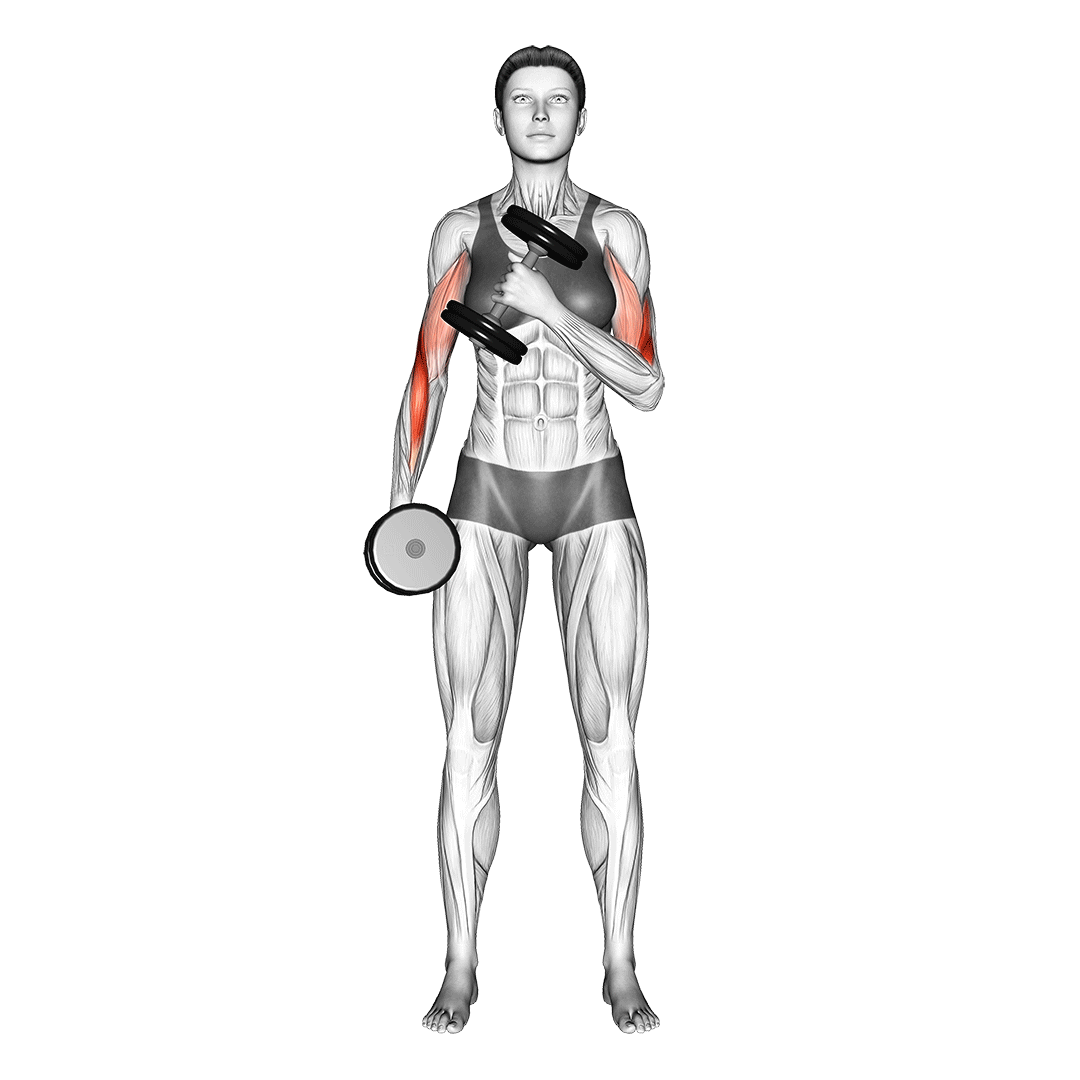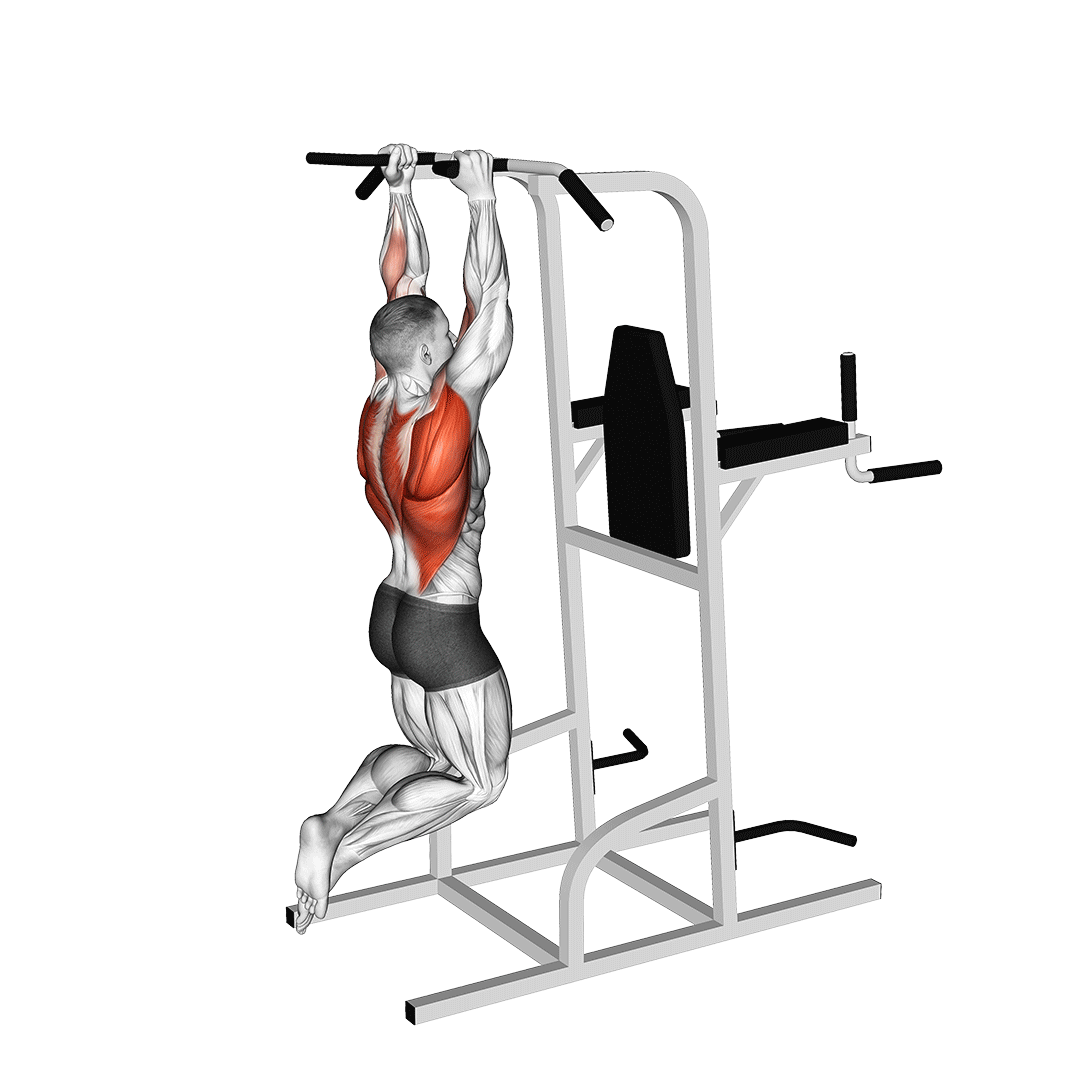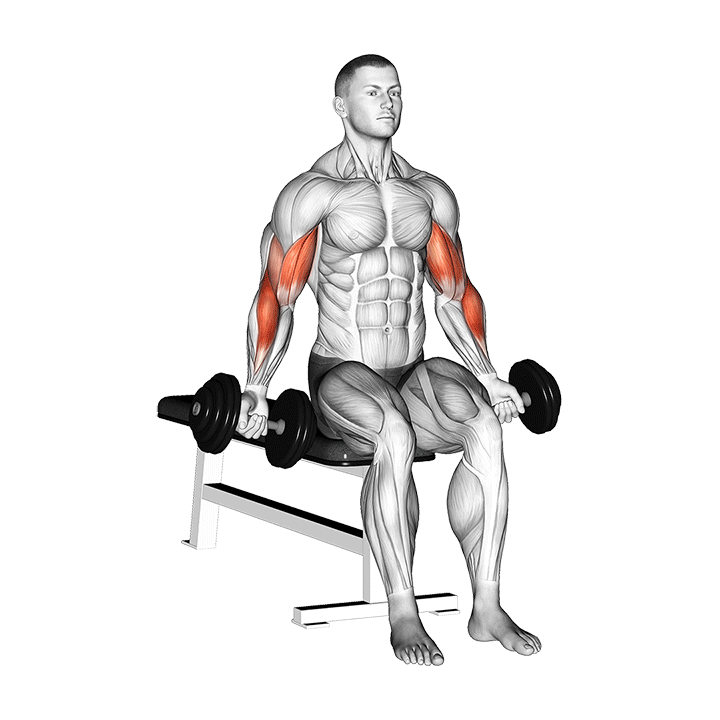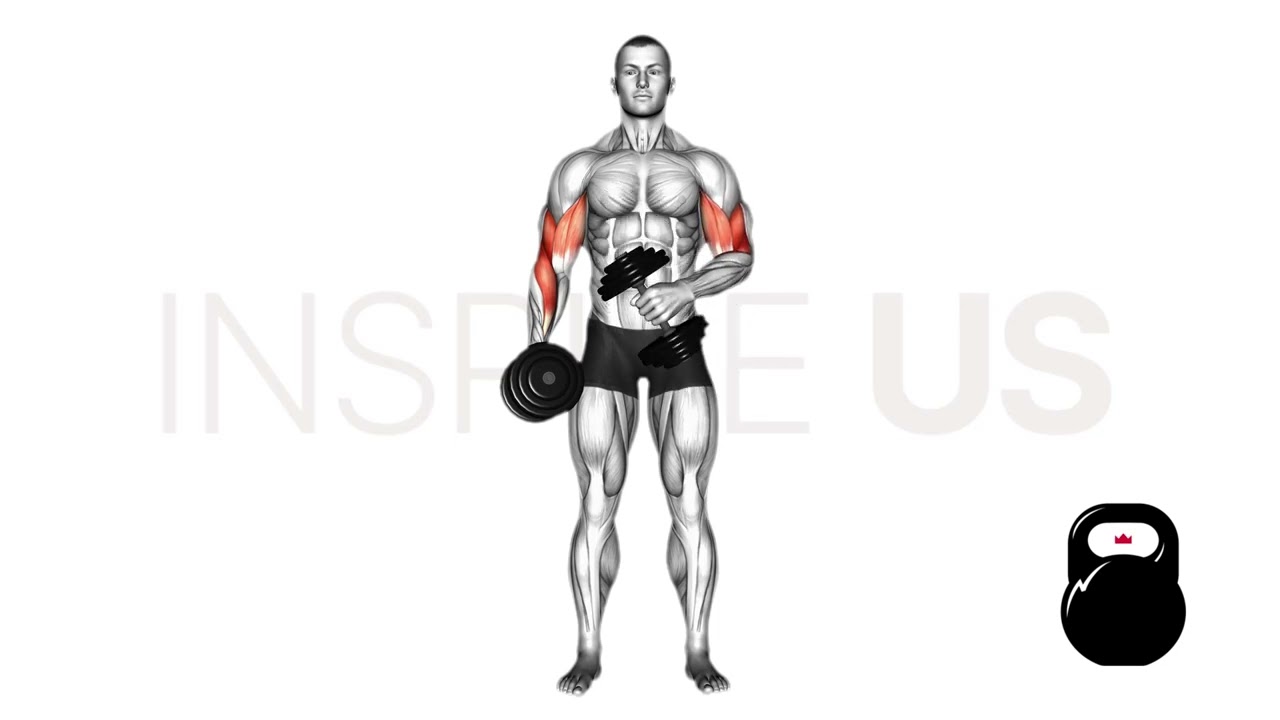Crossbody Hammer Curl: Benefits, Muscles Worked, and More
As iconic and effective as the regular hammer curl is, things can be taken even further by simply drawing the arm across the torso, rather than simply moving it vertically.
This small tweak in execution turns the exercise into what is known as a “cross-body” hammer curl, maximizing range of motion and helping the lifter focus on one side of the body at a time.
What is the Cross-Body Hammer Curl?
The cross-body hammer curl is an isolation exercise primarily performed to target the elbow flexor muscles of the arms. They are most often performed with the use of moderate-weight dumbbells in high-volume sets, but can also be done with a cable machine if so desired.

Cross-body hammer curls (like other hammer curl variations) feature a neutral grip and the usage of elbow flexion throughout the entire range of motion, starting with the arm at the sides of the body and ending with the forearm crossing the chest.
Who Should do Cross-Body Hammer Curls?
Cross-body hammer curls are both low impact and relatively simple, meaning that even novice weightlifters can benefit from this rather effective isolation exercise.
In particular, bodybuilders and individuals seeking thicker or wider arms will find cross-body hammer curls perfect for their needs.
However, those with a history of elbow, wrist or shoulder conditions should first consult their doctor prior to performing cross-body hammer curls.
How to Do a Cross-Body Hammer Curl
To perform a repetition of the cross-body hammer curl, the lifter will stand upright with a dumbbell held at their side, wrists in a neutral orientation and core contracted for stability.
Keeping the elbows close to the torso, the lifter will draw their hand (and the dumbbell) diagonally upwards, aiming to touch the dumbbell to the opposite shoulder.
The arm should remain untwisted as this action occurs, with the palms facing inwards and the lifter consciously squeezing the brachioradialis and biceps throughout the movement.
The general path of the dumbbell should begin at the sides of the body and cross the sternum, ending at the same height as the shoulder on the opposite side of the torso.
Once the dumbbell is at shoulder-elevation, the lifter will return their arm to its original position in a slow and controlled manner - thereby completing the repetition.
What Muscles Do Cross-Body Hammer Curls Work?
Cross-body hammer curls work the brachialis, the biceps brachii and the brachioradialis to great effect.

In particular, it is the brachioradialis and the long head of the biceps that will receive the most benefit from the exercise.
What are the Benefits of Doing Cross-Body Hammer Curls?
Apart from being an all-around solid exercise, the cross-body hammer curl is also excellent for achieving the following benefits in a workout session.
Builds Thicker and Stronger Arms
Cross-body hammer curls are among the few exercises that target the brachialis, brachioradialis and biceps in a single efficient movement. These muscles make up a significant portion of the arm’s mass - both in the upper arm and in the forearms.
With regular performance, the cross-body hammer curl will create thicker and more well-defined arm musculature, as well as allow for more strength to be utilized in any activities involving the arms.
Reinforces Elbow Flexion and Arm Stability
The biceps, brachioradialis and brachialis muscles are known as “elbow flexors” meaning that they directly contribute to flexion of the arms - in addition to stability of the shoulders and forearms.
Because cross-body hammer curls are so effective at developing these muscle groups, regular performance will also reinforce mechanics related to such musculature - producing more stable and injury-resistant arms as a whole.
Full Focus on Unilateral Muscular Contraction
Cross-body hammer curls offer a perfect solution for lifters seeking to prioritize one side of the body at a time.
Since they can't be performed bilaterally, these curls provide a greater opportunity for conscious muscular contraction. This enhanced control allows lifters to focus on maintaining proper time under tension and ensures greater attention to detail with each repetition performed.
Low-Impact, Accessible and Easy to Program
Cross-body hammer curls are as simple an exercise as they get.
With a relatively small movement pattern, they are not only easy to program but also carry minimal risk of joint impact or injury. This makes them the perfect exercise for novice weightlifters or individuals with technically-complex workout programs.
Common Cross-Body Hammer Curl Mistakes
Although the cross-body hammer curl is quite easy to perform, the following are a few common mistakes that you may be accidentally making.
Bending the Torso
Properly executing a repetition of the cross-body hammer curl requires the torso to be angled in such a way that maximum range of motion is possible.
However, lifters attempting to lift too much weight may be unconsciously drawing the shoulder of the opposite side towards the dumbbell as they struggle to complete the repetition - reducing the effectiveness of the exercise and leading to poor form.
In order to ensure each repetition is performed to the fullest extent, the torso should remain upright with the entirety of the movement coming from the arm gripping the dumbbell.
Twisting the Arm
As the dumbbell is raised over the torso, the palm must remain facing inwards with the wrists in a neutral orientation in order to target the brachialis and brachioradialis.
Twisting the arm so the palms face downwards or away from the torso can place unnecessary strain on the joints of the arm, and take much of the emphasis away from the intended muscle groups.
Swinging the Dumbbell or Otherwise Using Momentum
As is the case in many other isolation exercises, performing the cross-body hammer curl with the use of excessive momentum - either by swinging the torso or the dumbbell itself - will negate much of the time under tension needed to develop the arm’s musculature.
Drawing the Dumbbell Upwards, Rather Than Diagonally
Unlike a conventional hammer curl, the cross-body hammer curl requires the dumbbell to be drawn in an upwards and diagonal path, rather than simply a vertical one.
Lifters new to the exercise may make the mistake of first raising the dumbbell vertically before drawing it sideways across the torso - a mistake that shortens the exercise’s range of motion and may place strain on the joint of the shoulder.
Best Cross-Body Hammer Curl Alternatives
If cross-body hammer curls don’t quite meet your training needs, the following alternatives may be a good place to look.
Neutral Grip Pull-Ups
For lifters seeking a heavier and more wide-reaching substitute to the cross-body hammer curl, the neutral grip pull-up also targets much the same muscles of the arms while also training the muscles of the back and shoulders.

Hammer Curl Machine
If a lengthier time under tension and reduced stabilizer muscle usage is needed, lifters may substitute the cross-body hammer curl with the machine hammer curl.
This will preserve the same movement pattern and muscular recruitment set while simultaneously featuring fewer of the risks and disadvantages associated with free weight exercises.
Zottman Curls
In cases where the cross-body hammer curl is meant to build mass in as many arm muscles as possible, one possible alternative is the Zottman curl - of which is a combination of a dumbbell reverse curl and a conventional bicep curl.

Substituting cross-body hammer curls with Zottman curls will reduce emphasis on the brachialis muscles in exchange for greater forearm and biceps recruitment.
Frequently Asked Questions (FAQ)
Are Cross-Body Hammer Curls Better Than Regular Hammer Curls?
In terms of range of motion and time under tension - yes, cross-body hammer curls are indeed better than their more conventional counterparts. However, they may be less time-efficient due to the fact that only one side of the body will be trained at a time.
What is the Best Way to Do Hammer Curls?
The best form of hammer curl is whatever fits your needs most.
For high-volume and a lengthy time under tension, machine hammer curls are a good pick. For building functional strength and stability, cross-body hammer curls and regular hammer curls are hard to beat.
Do Hammer Curls Build Big Arms?
Yes - hammer curls work the brachialis, biceps and brachioradialis, of which make up a significant portion of the muscle mass in the forearms and upper arms.
When combined with a proper training regimen, hammer curls are invaluable for building well-defined and muscular arms.
Final Thoughts
Despite the seemingly small change in form, the cross-body hammer curl is a highly effective movement that takes the traditional hammer curl to the next level. When performed with proper form in mind, it can be one of the best elbow flexor training tools out there.
Regardless of whether you’re a bodybuilder or simply someone looking for bigger brachioradialis muscles - the cross-body hammer curl is a worthwhile inclusion into your training program.
Give it a try and enjoy the benefits of stronger and more muscular arms.
References
1. Coratella, Giuseppe, Gianpaolo Tornatore, Stefano Longo, Nicholas Toninelli, Riccardo Padovan, Fabio Esposito, and Emiliano Cè. 2023. "Biceps Brachii and Brachioradialis Excitation in Biceps Curl Exercise: Different Handgrips, Different Synergy" Sports 11, no. 3: 64. https://doi.org/10.3390/sports11030064
2. Meadows, John. (Jan 22, 2018) “Tip: Cross-Body Hammer Curl” Bigger Stronger Leaner TNATION Retrieved from: (https://www.t-nation.com/training/tip-cross-body-hammer-curl/)

